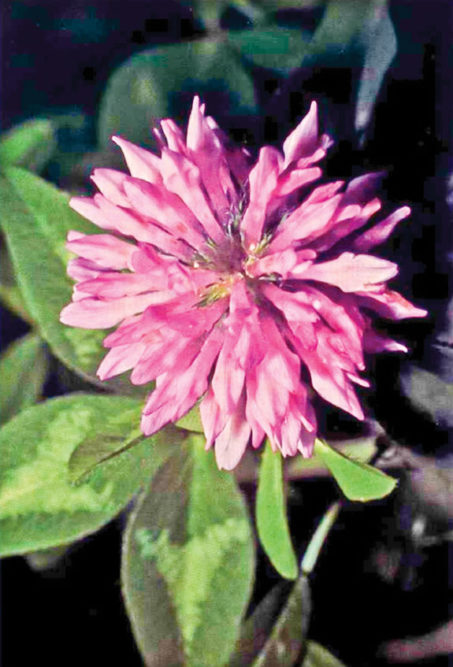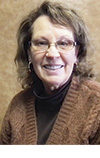The legume, frequently found in northern Wisconsin fields, can be harvested early (at first flower) to increase nutritional value.
It thrives in that state’s acidic soils and is often a viable alternative in soil and climate conditions where alfalfa doesn’t do well.
“You see a lot of red clover in the northern tier states along the Canadian border and into Canada,” Dr. Dan Undersander, University of Wisconsin agronomy professor, says.
“Red clover is more tolerant of cool weather and wetter soils than alfalfa. Producers should be aware that it turns pretty dark when it’s ensiled. In some cases, good clover haylage or baleage looks like spoiled alfalfa due to its dark color.
It doesn’t serve as well as a hay product because of the pubescent hairs on the stem. When it dries, those hairs can be sticky and cause itching when handled.”
A short-lived perennial, red clover has traditionally been susceptible to a number of diseases that cause it to die out after two or three years. However, new disease-resistant varieties are extending red clover stands up to four years under many conditions.
Because red clover tolerates more shade, it works well with grasses for pasture mix. Forage quality of red clover is similar to alfalfa, but it has the advantage of maintaining quality longer as it ages. Red clover seed is less costly than alfalfa, but Undersander recommends using the hardiest varieties when establishing a new stand.
“The cheapest red clover seeds may not be an advantage in the long run,” Undersander says. “Older varieties cost less but stands from newer varieties provide more forage in the long run.In selecting seed, look for good disease resistance and proven persistence.
When properly managed, newer red clover varieties will provide as many as three good harvest years after the year it’s established. Red clover establishes faster and produces more forage than alfalfa in the year you plant it.”
Frost seeding is one of the methods Wisconsin forage experts recommend to establish red clover stands for pasture, not for hay/haylage. The practice involves broadcasting the seed during a period when temperatures are fluctuating enough to alternately cause thawing and freezing activity.
“Generally frost seeding is done at the end of March, first of April,” Tom Cadwallader, University of Wisconsin Extension agriculture development agent, says. “The thawing and freezing action provides good seed-to-soil contact and you get good germination. The process doesn’t work as well in sandy soil.”
Red clover’s fertilizer needs are similar to any other legume. Soil testing is the most accurate process to determine nutrient needs. Red clover uses top-dressed phosphorus or potassium more efficiently than alfalfa due to its extensive surface rooting system.
Needs for sulfur and micronutrients are similar to those of alfalfa. However, red clover’s boron requirement is lower.
Red clover also tolerates higher levels of manganese than alfalfa, which is one of the reasons it thrives in northern Wisconsin’s acidic soils, which are naturally high in manganese.
Liming red clover fields to a pH of 6.0 to 6.3 will boost production. Studies of red clover’s response to lime have shown that stand vigor and persistence were improved by liming to raise soil pH to 5.8 or above.
The greatest tonnage from a red clover field is realized the first year it’s planted. Each succeeding year tonnage will decrease as the stand thins out. With adequate moisture, red clover can produce dry matter yields and forage quality equal to or better than alfalfa.
Red clover has traditionally been cut twice a year when at 50 percent bloom or greater. Cutting three times per season results in higher forage quality but could reduce yield and stand longevity.
In field tests conducted at the U.S. Dairy Forage Research Center in Madison, Wisconsin, it was documented that early cuttings of red clover improved seasonal distribution of yield, favorably decreased NDF and rumen degradable protein (RDP) and increased crude protein and rumen undegradable protein (RUP). The early cuttings were initiated on June 7, allowing for 40 days between two successive cuttings.
Generally, more than half the protein in alfalfa silage breaks down into non-protein nitrogen (NPN). In a dairy situation, NPN is used less efficiently by lactating cows than intact protein. If it’s not used to make milk, the excess nitrogen is excreted in the manure.
“There’s less protein breakdown in the silo when red clover is ensiled rather than alfalfa,” Glen Broderick, dairy scientist at USDA’s Dairy Forage Research Center in Madison, says. “Red clover has about 40 percent less NPN because it contains an enzyme, polyphenol oxidase, which reduces protein breakdown.” This also results in higher RUP for red clover silage.
“The higher digestibility of red clover NDF is a big deal for dairy cows, not so much for beef,” Broderick says. “Dairy cows need lots of energy to support high levels of productivity. In a feedlot situation, there isn’t as much concern about fiber utilization.”
At harvest, red clover can be difficult to dry. The same characteristics that make it digestible interfere with the drying process.
“Wrapped bale silage has been a Godsend in that respect,” Cadwallader says. “It allows for a timely harvest without having to dry down. With more dairy farmers using or considering a grazing system rather than a confinement system, red clover is getting more attention.
Research has shown time and time again that heifers do wonderfully on pasture. A pasture-based system reduces expenses significantly, with feed costs dropping to nearly nothing over summer.With an emphasis on economics in the dairy industry, red clover could become an important factor.”
Broderick says the positive data coming from red clover research over the past few years continually makes it a good alternative to alfalfa.
“If growers are comparing red clover’s benefits to alfalfa, they’re going to see more positive benefits now than they saw five years ago,” Broderick says. “That’s because of the research data that’s coming out.”
Cadwallader would like to see more emphasis on developing increasingly profitable red clover varieties.
“Dick Smith was a plant breeder at the USDA Dairy Forage Lab at Prairie Du Sac in the ’80s,” Cadwallader says. “He took some comments about improving red clover varieties to heart and came up with the new varieties we’re still using today. It didn’t take him long at all to develop superior varieties. We need to shift some of the focus on alfalfa to improving red clover. Red clover could be a very good fit for forage growers in the near future. Efforts to improve red clover continue at the USDA Dairy Forage Research center as well as at private companies that are continuing to release improved varieties.” FG
Loretta Sorensen is a freelance author with Prairie Hearth Publishing, LLC in Yankton, South Dakota.














